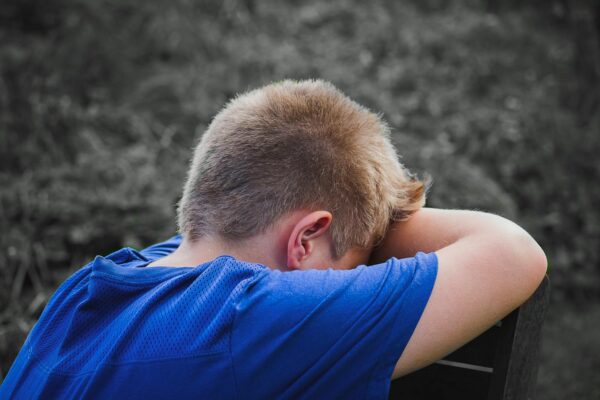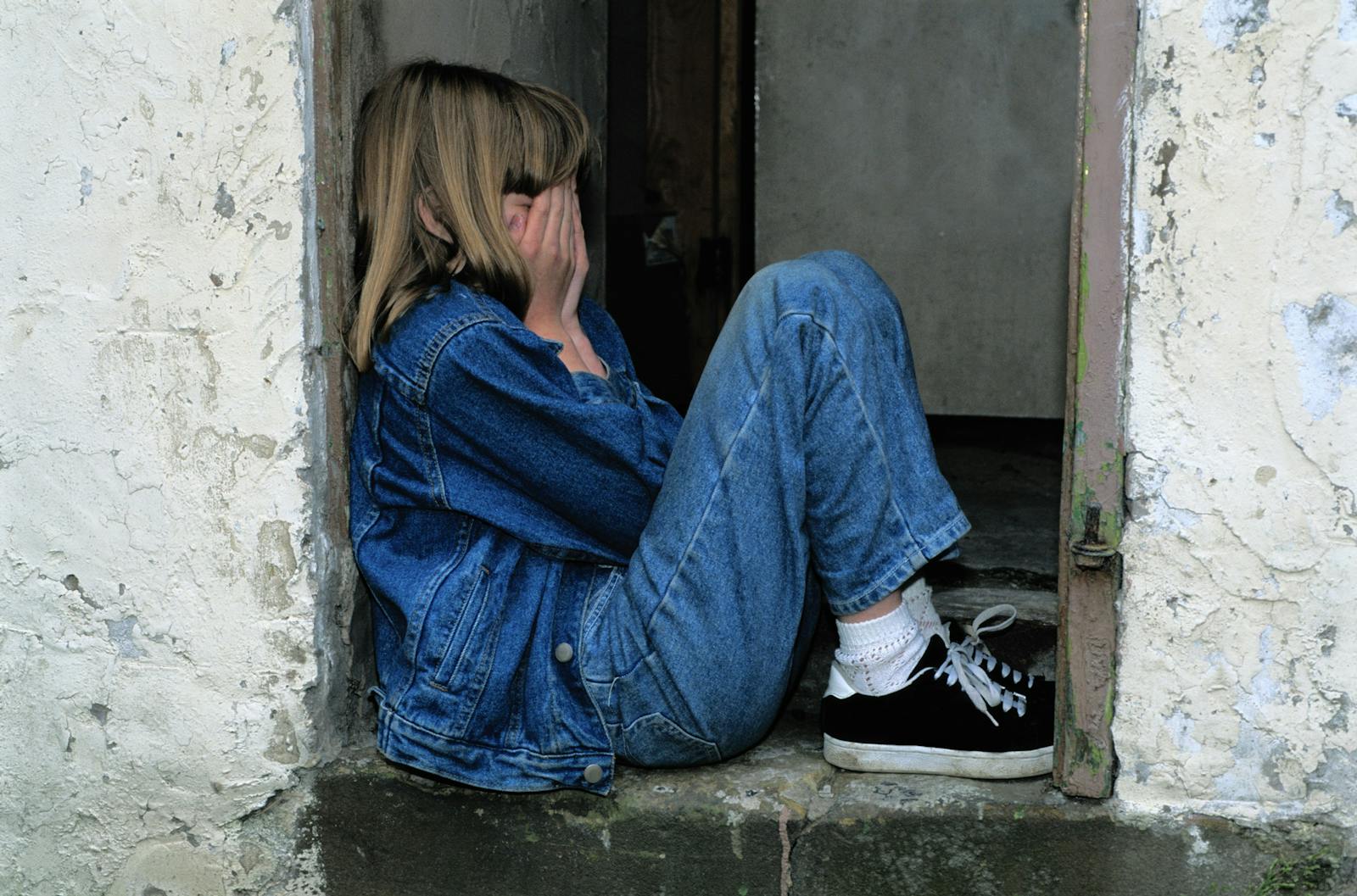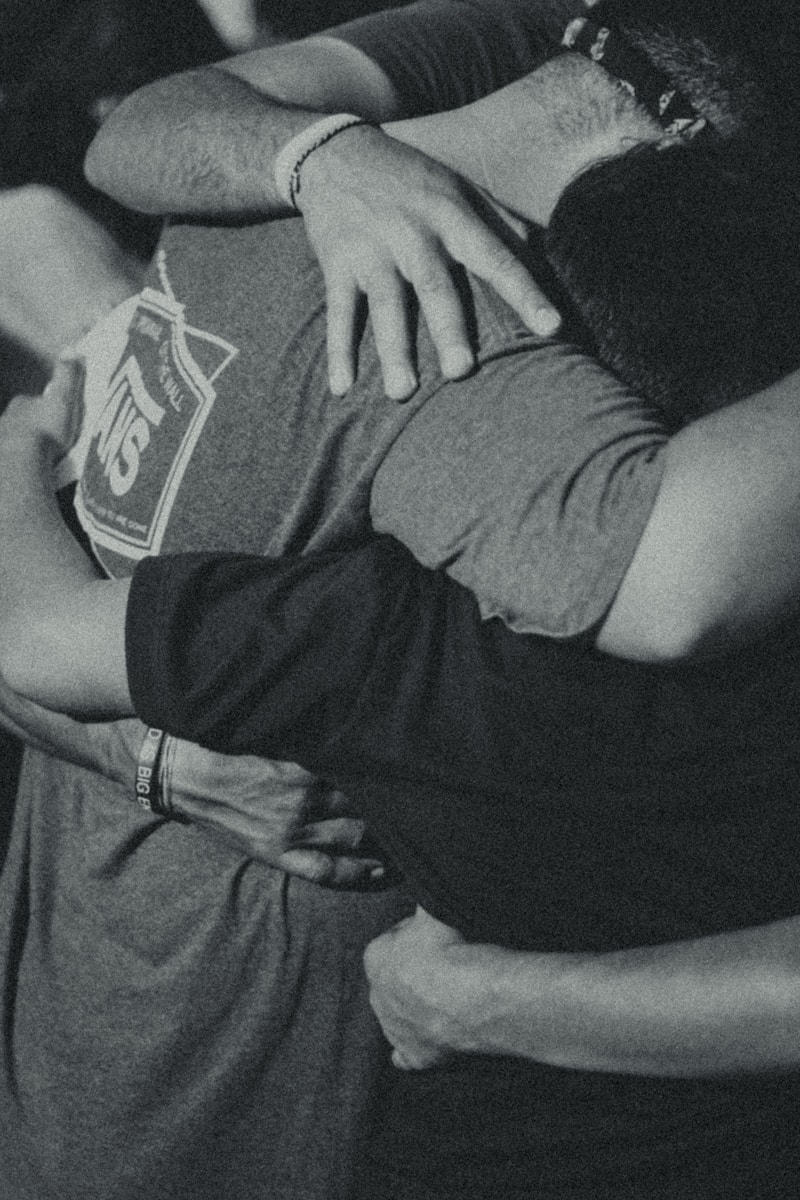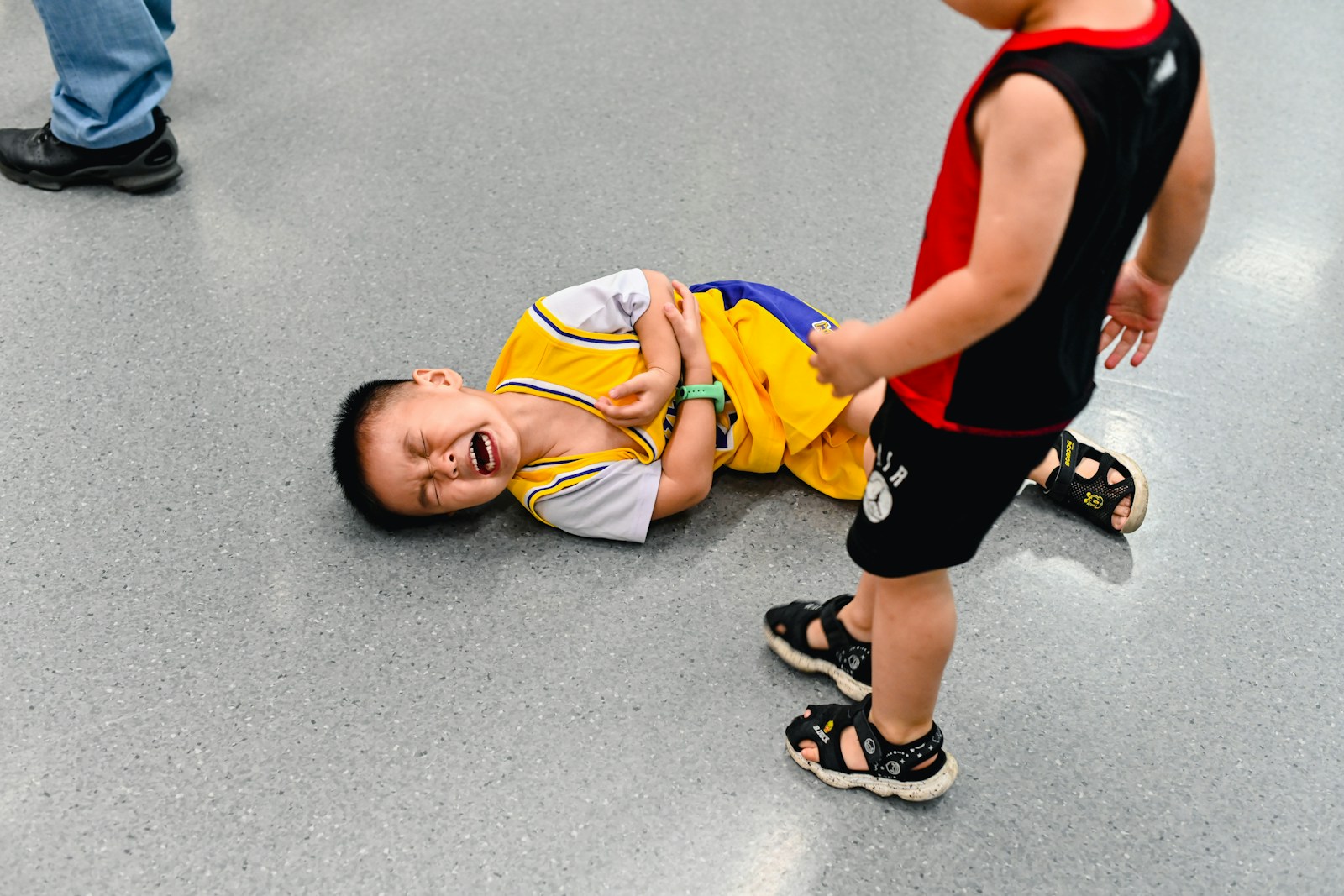The post What to try before bringing your child for Play Therapy appeared first on Linda Smallbones.
]]>3 May 2024
I often get asked a really good and important question:
When do I bring my child in for play therapy?
Most often, the thing that flags the need for play therapy is a child’s behavior as they become dysregulated and struggle with day-to-day normal, healthy interactions. Dysregulation is when the individual feels overwhelmed by emotions, often physically “off-balance” (stomach ache, headache, heavy or sore muscles to name a few) and just not themselves. Their response is to behave in ways that will attract help in order that they might feel like themselves again.
Dysregulation can lead to a “hyper-aroused state” in which one could be hyper alert and vigilant, anxious, breathless, irritable, and unable to settle in one’s thoughts and actions and a general sense of anxiety. You might see tantrums or meltdowns if your child is hyper-aroused.
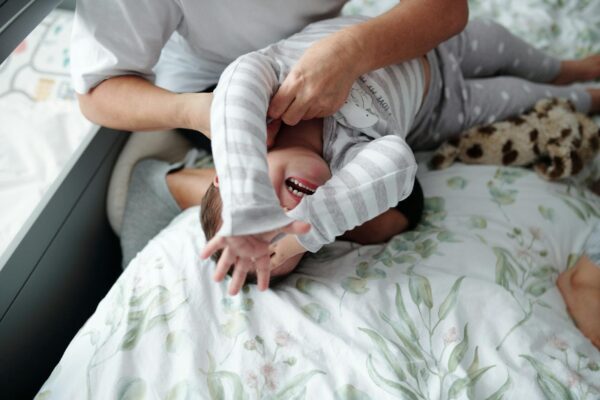
Photo by Jep Gambardella on Pexels
Or, dysregulation can lead to a “hypo-aroused state” which looks like under-responsiveness, low mood, low energy, withdrawal from others, lethargy and even depression.
Dysregulation causes all sorts of behavioural issues in children that they are not able to manage on their own.
It is important to say here that dysregulation is a normal, everyday part of life for children and adults alike, we can become dysregulated for periods of time throughout everyday, but when we are generally healthy in mind and body, we are able to regulate ourselves. There are exceptions to this*.
I want to invite you to think about the following actions that you can try at home that provide regulation for your child before considering play therapy.
Are you spending time with your child?
How much time have you spent with your child recently? All children needs lots of our quality and quantity time. Have you been in a position to give time lately? If not, see if consciously spending more time with your child makes a difference. Quality time is about making the time together child-centered. Lots of parents bring their child along on their errands to spend time with them which is great, but time with them shouldn’t be limited to this. Even regular, but small doses of one on one time can make a huge difference. My recommendation when you’re really pushed for time is at least 15 minutes a day when your child knows you are completely focused on them, no distractions or devices. Just face to face, child-centered time.
Your child who needs regular doses of your undivided attention may be struggling if they’re not getting it. They may even interpret lack of time with you as lack of love and care. This can cause them to escalate their behaviour to get you to notice them.
What has changed?
Has your family been through any changes recently? It may even be a small change in your eyes, but it can still have a big impact on your child. Depending on their age, consider asking them about the change, what they think of it and how it is going for them. Notice when they have handled changes well and praise them for this.
You may also be anticipating a change, whether it is exciting or daunting, all change brings in the unknown which children do need help navigating. Lisa Dion describes “the unknown” as one of the 4 major threats to the brain. You can learn more about it in her podcast here.
Often, simply by acknowledging the impact of change on your child, you can help them to settle and become regulated.
Heads, shoulders, knees, toes and tummy…
Think about your child in totality. How are they doing at school? How has their health been? What is their diet like? How active are they? (Children need at least an hour of physical activity every day). How much screen time are they getting? (Children under 12 should have no more than one hour per day – preferably less than an hour daily).
If something in their daily life is very out of balance, considering looking a little deeper into this and what you could try and tweak. They might need more of something and/or less of something else.
Where is the fun?
Children need play, fun and joy to thrive and grow. In the day-to-day hustle do you find yourself only barking orders and talking to your children only when you need to tell them what to do or not do? It is easy to fall into this pattern when there is so much going on and so much to remember to get done. You’re doing it for them, after all, right?!
Find time for a bit of silly in the daily hustle, it’s good for you and for them. Tell a joke or two over breakfast, pull a prank (if you can bear the inevitable retaliation!), give time to kick a ball or play dress-up. Do something fun and uncharacteristic with your children, they’ll love it!
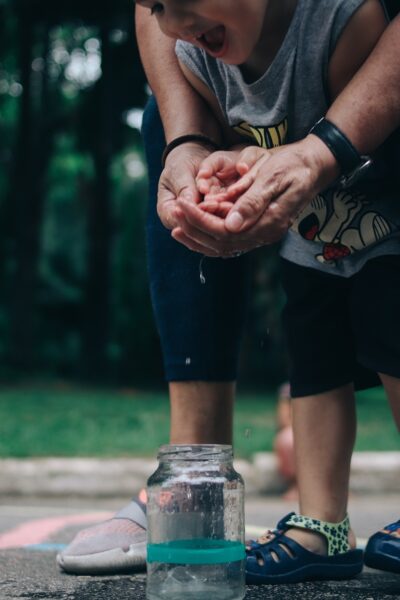
Photo by educadormarcossv on Pixabay
Listen
You know something is up with your child, or you wouldn’t be considering play therapy. Make sure you’ve taken time to listen; by noticing their body language and actions, by talking to them and really listening to their answers. Make sure they know you truly are there to listen and not lecture. You’re not asking them to explain themselves to you, you’re asking how they’re doing and what their perceptions are about life right now.
Look after yourself
Perhaps the hardest for parents, but consider how you care for and love yourself. Dan Siegel says “The number one predictor of a child’s well-being is a parent’s self-understanding.” If you’re working on caring for yourself, you will have better outcomes for yourself, your child and your relationship with your child. If you’re parenting with nothing left to give, consider investing in external support for yourself first (yes, I am saying put yourself first). Whatever external support you choose should help you to regulate yourself more consistently, which in turn will help you to be there to regulate your child.
I’ve tried all of this and nothing has changed…
Well, it might be time for play therapy. But here is what I believe is true: You are what your child most needs. Play therapy is hopefully a support and enhancement to that relationship.

*There are times in life when we are simply not able to regulate ourselves at all and outside support and help for ourselves and our children is necessary. Examples could be when you are experiencing ongoing stress that is beyond your capacity to manage, a mental health condition, separation or divorce, significant loss, and trauma. What is happening for you, impacts your child too even though they may not have cognitive knowledge of the situation.
The post What to try before bringing your child for Play Therapy appeared first on Linda Smallbones.
]]>The post The Question of Why appeared first on Linda Smallbones.
]]>3 May 2024
Something that I hear fairly frequently from parents is their frustration at when they ask their child “why” they did this or that, their child is unable to answer them. Or, that every time they ask them “why” they get a different answer.
Parents, of course, are really trying to understand what is motivating their child’s behaviour particularly when the behaviour is undesirable. We’re driven by the belief that if the child will just tell us what is going on, we can get to the bottom of it and deal with it.
Sadly, it’s not that simple.
Violet Oaklander, the ‘mother’ of Gestalt Play Therapy writes about children who lie and the reasons they might do so. One reason is that when a child is asked a “why” question by a grown up, they feel they need to have a plausible reason and so they may need to make it up in order to placate the grown up. There is a risk when you ask your child “why” that you’re setting them up to lie to you, not because they’re dishonest, but because they know they are expected to have an answer, even if it is not an authentic one.
But the truth is, do we always have good reasons for doing what we do? If we’re in an emotional state, we do things without thinking and may not be able to offer reasonable explanations for our actions afterwards. If this is true of adults with a fully developed pre-frontal cortex*, then how much more so for children who don’t yet have a fully developed brain.
What is the motivation behind a “why” question? Maybe we want a neat and understandable answer, we want reasons for what is happening and we want to be able to “fix it”.
But what if we assume that children are simply not able to give answers to “why” questions in terms of their behaviour. What if we could explore in a different way, not through asking questions, but through connecting.
If your child is having a hard time, whether you know what it is or not, they are most likely in a heightened emotional state and possibly feeling disconnected from themselves and you. Not many children are capable of articulating in words what is happening in their inner world – hence the power of play therapy to play about their feelings and experiences rather than having to directly talk about them.

Photo by Hannah Nelson on Pexels
Here are some things you could try instead of asking “WHY”!
Take a breath.
Stop and notice how you are being triggered in the moment; what is the behaviour your child is displaying bringing up in you? What feelings or thoughts are being evoked? It might be making you grumpy, angry, sad, or worried. How is it feeling in your body? Quickening heart beat, red in the face, heavy hearted. All of these and more are legitimate responses. It’s tough (frustrating/confusing/worrying.. take your pick) to see your child have a hard time and not know what the real issue is or how to help.
Connect with your child.
Start by simply spending some alone time with them, even if it’s 15 minutes a day. Play a game or go for a walk. This will set you up to be able to start a conversation.
Be curious.
You could use the phrase “I’ve noticed that…” and name a specific behaviour they have been doing. The tone of voice you use is important, tap into compassion and patience. “I think you’re having a hard time because I see that you’re…” and name a specific behaviour that you’ve noticed.
Use empathy.
“Everyone has a hard time sometimes. I am wondering how I can help you?” Name the difficult emotions in your child when you see them “You look a bit upset right now, are you upset or is there another feeling you’re feeling?” or “You look really angry. Can I help you?”
Give it time.
This is important; make space for responses, don’t expect instantaneous replies. If you rush, your child may assume you’re not being genuine in your attempt to connect and this may make them feel less safe and shut down. Some conversations may bear absolutely no fruit in terms of understanding what is happening for your child, even if you take your time, use empathy and make a safe space. Are you willing to simply enjoy being with your child, to love them in the place they’re at in spite of their behaviour? This is called unconditional love, and we need to keep remembering that this is our primary job as parents.

Photo by Michaela St on Pexels
A “why” question is not going to give you a deep or even good understanding of what your child is going through – it may give you a surface answer at best if they’re able to formulate a response. But, connecting with your child through spending time, and using empathy and compassion will give you a better relationship and deeper insight into what they’re going through and where their behaviour is coming from.
Give it a go and let me know what happens! I would love your feedback!
*The pre-frontal cortex is the last part of our brain to be developed and is said to be fully formed by the age of 25 years old. The pre-frontal cortex is responsible for logic and reasoning, planning, problem-solving, memory, focus and attention and impulse control.
The post The Question of Why appeared first on Linda Smallbones.
]]>The post Working Holidays appeared first on Linda Smallbones.
]]>19 April 2024
You know how when you’re at school, you get back from holidays and usually the teacher gives a task to write or draw about your holiday? Well, here’s my holiday in words and pictures. It’s been really, really good.
Just keep learning!
The feature image on today’s blog was snapped on my phone on the morning commute to the Play Therapy training I attended in Cape Town at the end of March. Yes!! I got to be in beautiful Cape Town on a, I want to say life-changing, learning experience.
Lisa Dion was brought over from the States by Play Therapy International South Africa to give a two day introduction to Synergetic Play Therapy.

Lisa is a brilliant, engaging trainer and I loved every single minute of the time. It was intense, but so, so good! I am still integrating my learning, and it’s so much fun to try out new things in the play room with kids. I found the training helping to consolidate a whole lot of concepts I’ve been exposed to in recent years, very refreshing to be presented with a framework to help tie many concepts together AND put them into practice in the play room. I feel very enthused for work – which really is what continuous development should be all about.
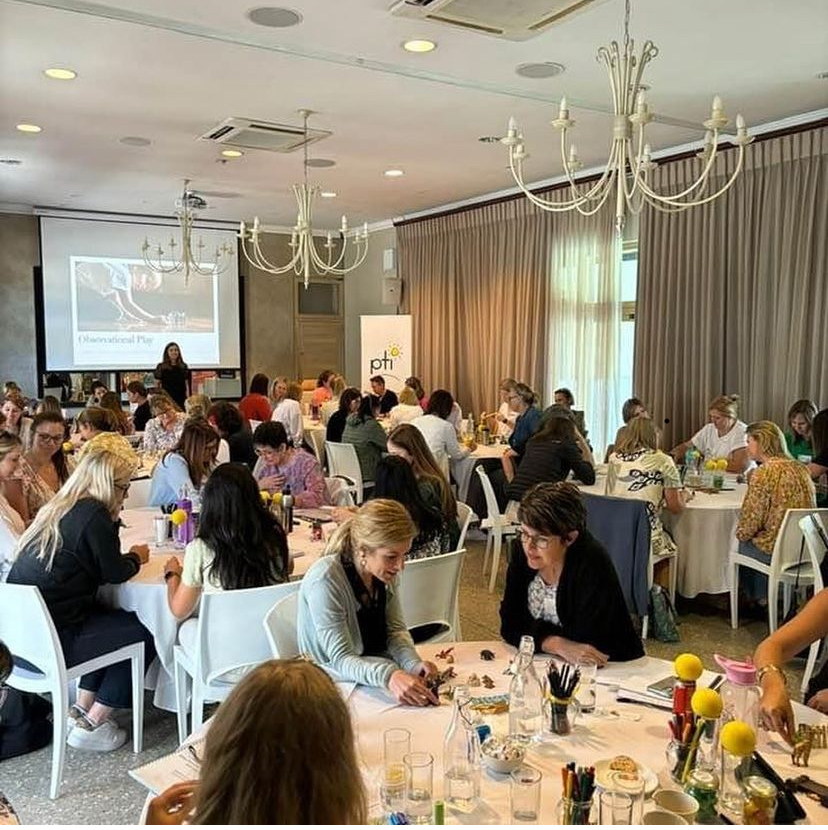
The best thing about play therapy training is that much of the learning happens through play!
Rest and Play!
We had a brilliant Easter weekend away camping in the mountains, finding beautiful pools to swim in. So happy to revel in the warm weather, a reprieve from the usual Easter weekend forecast of rain, rain and more rain.
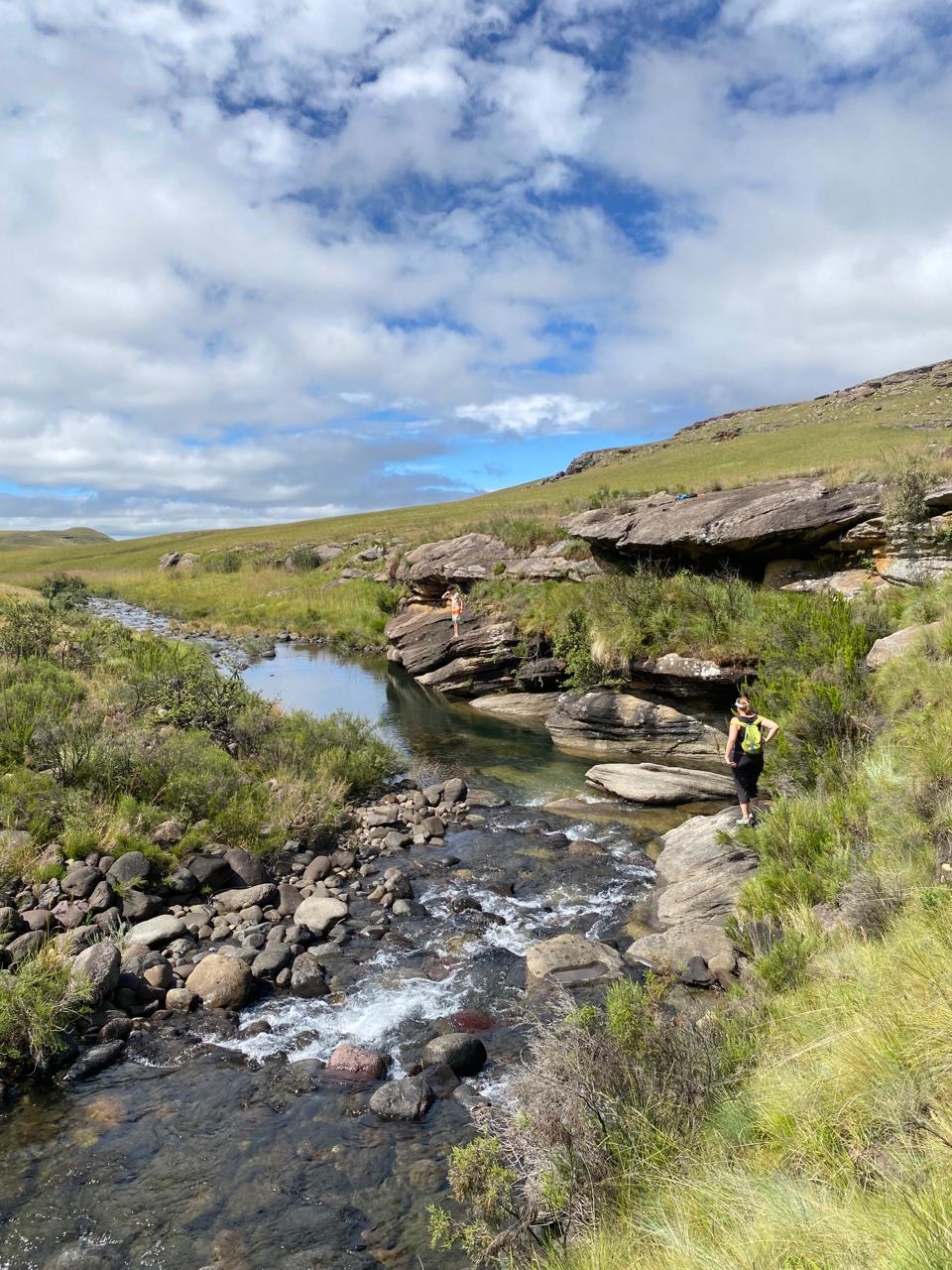
Workshopping
I love workshop facilitation. Particularly when it’s a topic I am passionate about, and particularly when it’s a group of people I know and love personally and professionally. I got to go back to my previous workplace and work with my colleagues for two days. I absolutely loved it!
Thanks dlalanathi Team, you’re still the best!

Back to Work!
Last week was a slow introduction back into the play room and this week I’m fully back. I can’t wait to see you!!
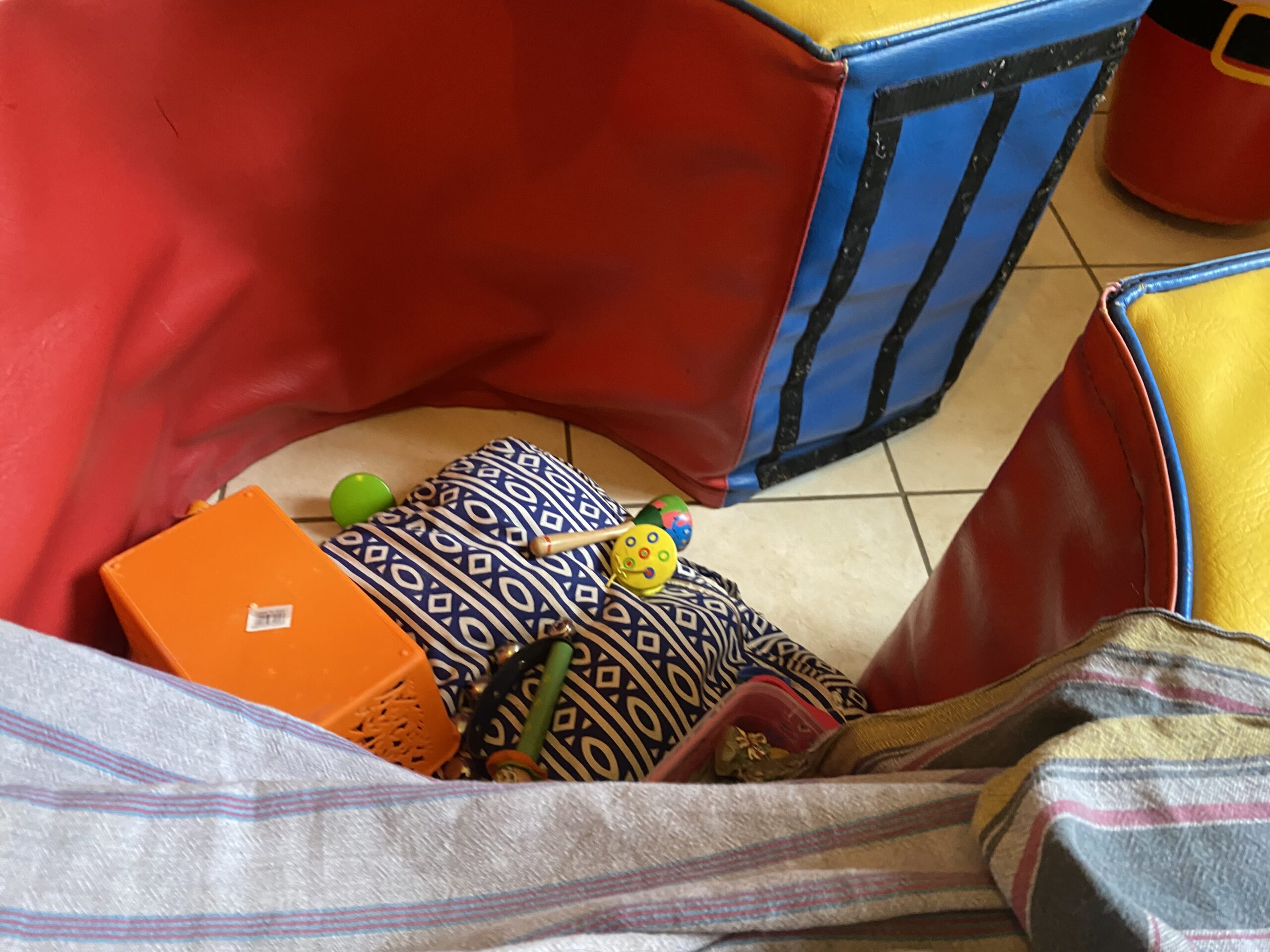
The post Working Holidays appeared first on Linda Smallbones.
]]>The post It’s the HOLIDAYS! appeared first on Linda Smallbones.
]]>22 March 2024
Hi everyone! Easter holidays are upon us – well done parents of South African children, term one done and dusted! In the words of Fat Amy… Acabelieve it! (And if you don’t get this reference then you have never watched Pitch Perfect. And that means you have some more movie-watching homework. Not for children.)

Anyway, I digress.
I was sent this cool personality quiz for kids by my friend, from a website called https://knowandlove.com/
I had fun with my two children taking the quiz and comparing our results. There are 8 personality types, based on the Myers-Briggs personality tests. They’ve made it child friendly by assigning an animal to each type, it’s beautifully illustrated and relatable.
Why not take a bit of time this holiday and do the quiz as a family connection activity, have fun exploring your similarities and differences. You can read a description of each of the 8 animals here. And you can take the quiz here. It’s suitable for children from 5 years old.
It’s good to remember that no personality test is 100% accurate because every single one of us is completely unique. There will be parts of our “type” that resonate and parts that don’t. It’s all about deepening our understanding of ourselves and loved ones that helps our connections to grow and mature.
I wish you and your family a beautiful and blessed Easter.
The post It’s the HOLIDAYS! appeared first on Linda Smallbones.
]]>The post Broken things appeared first on Linda Smallbones.
]]>15 March 2024
“Our hearts are broken about things that are broken…” Jennie Allen.
This has been resounding in my soul ever since I read it. I have times of feeling heartbroken for people and situations who are broken, including myself, I think most of us do. None of is completely whole all of the time.
If this is you right now, I see you.
Here is the rest of the quote.
“…and we need people to be with us in it and not to just fix the problem. But to feel what it is we’re going through.” Jennie Allen
Be as broken as you might need to be, but share it with someone. Someone you know will really listen, not try and fix it, but hear you and see you.
Photo by Josue Escoto on Unsplash
With all of my love and compassion,
Linda
The post Broken things appeared first on Linda Smallbones.
]]>The post Movie Review: Girls Night In!! appeared first on Linda Smallbones.
]]>1 March 2024
Most definitely watch “Are you there God? It’s me, Margaret.” It was recently released on Netflix and it is an absolute joy.
Judy Blume is the author of the book upon which the movie is based. I grew up reading Judy Blume’s books, I can’t recall how old I was when I read this one, I just know I loved it. It was published in 1970, and is truly timeless.
I watched it with my 13 year old daughter and we had a lovely time together, laughing a lot. Some parts cringy (aka adolescence!), some incredibly tender, very entertaining and very on point for tween and teen girls the world over. The movie finished and my daughter let out a gasp of disappointment “it’s over?”. The characters are brilliant and draw you into their world completely. If you’ve never talked to your girl child (or boy, for that matter) about her developing body, this movie may open up some conversations for you!
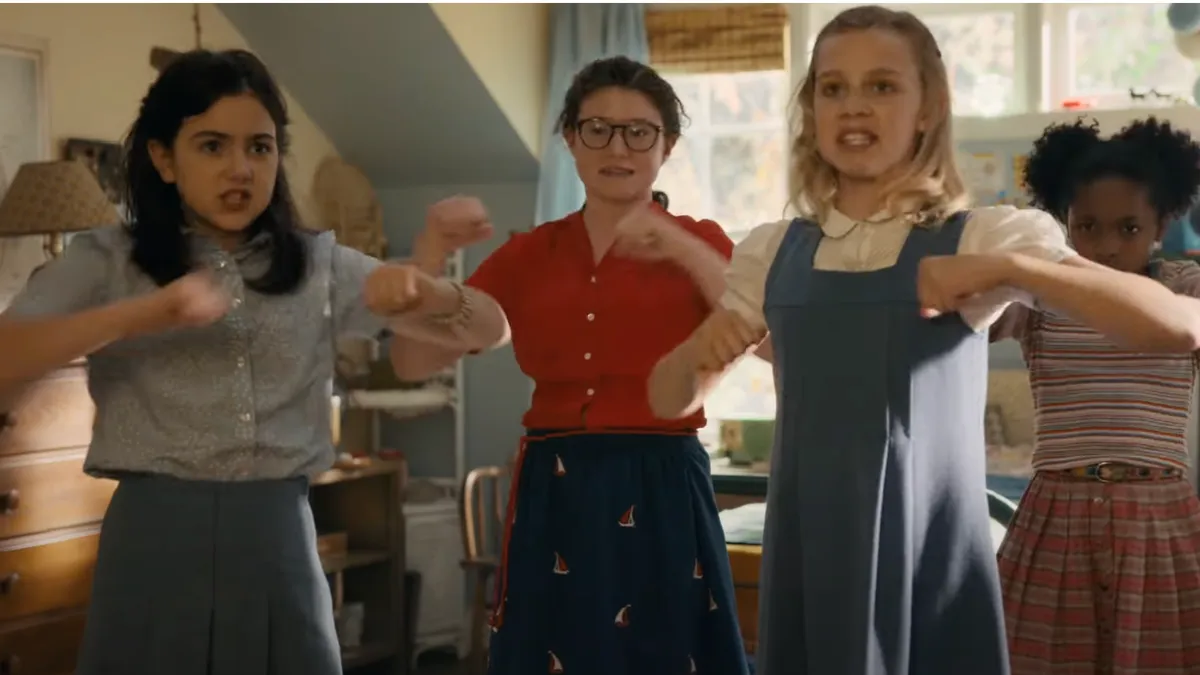
The movie helps children to see that they are not the only ones going through what they’re going through, that life can be tough at times, that we experience disappointment and that things can also get better. Even though the movie is set in 1970 New York state, it is still relevant, and it helps us see that our everyday issues are everyone’s everyday issues across the decades. Margaret is a girl going through transition in more ways than one and you get to journey with her through the ups and downs.
So here is your homework for the weekend! Watch this movie!!
The post Movie Review: Girls Night In!! appeared first on Linda Smallbones.
]]>The post Tiggers! appeared first on Linda Smallbones.
]]>23 February 2024
Movement matters, and it especially matters to those who are “tiggers”.
(If you’re not acquainted with the Winnie-the-Pooh stories by AA Milne, well, maybe it’s time.) Tigger is one of Winnie-the-Pooh’s best friends, a very loveable, energetic and positive character. Tigger bounces everywhere. He’s enthusiastic and motivated. He’s always looking for the fun, fun, fun! In the stories where Tigger is not bouncing, he’s sad.
In sensory terms, a tigger is a sensory seeker. In other words, a person who very much craves and needs movement in order to feel calm and settled in their brain and body. Tiggers seek engagement in their environment, through other people or with objects. They will not shy away from kicking a soccer ball really hard. They love manipulating things with their hands – like playing with playdough or clay. They love to bounce – literally just like Tigger! They usually love getting their hands dirty, love rough play, and pitting their strength against others.
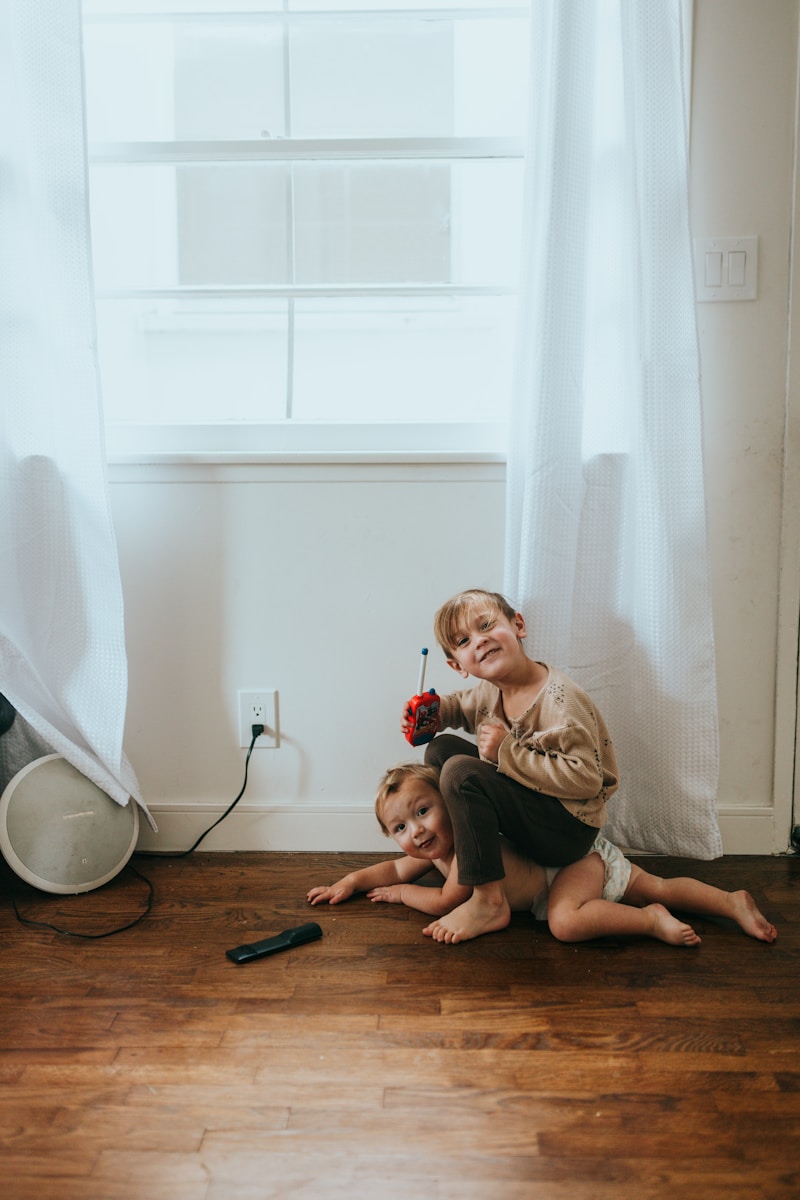
Photo by Nathan Dumlao on Unsplash
If children who are tiggers are not getting enough sensory input, for example if they are having too much sedentary time, or expected to be quiet and be in quiet spaces a lot, they tend to get irritable, over-fidgety, and even lash out at others in frustration. They might be labelled “naughty” or “attention seeking” as their behaviour can be provocative; this is because their sensory system is crying out for stimulation to help them regulate (ie: be calm).
A tigger friend of mine (She’s an adult, just in case you think only children can be tiggers.) was sharing with me recently how her mood was really low, she was feeling overwhelmed and disconnected. But then she started her high impact exercises again and everything changed. She went back to feeling energized, calm, and connected to herself. She was reflecting on how she needs movement to help feed the Tigger in her.
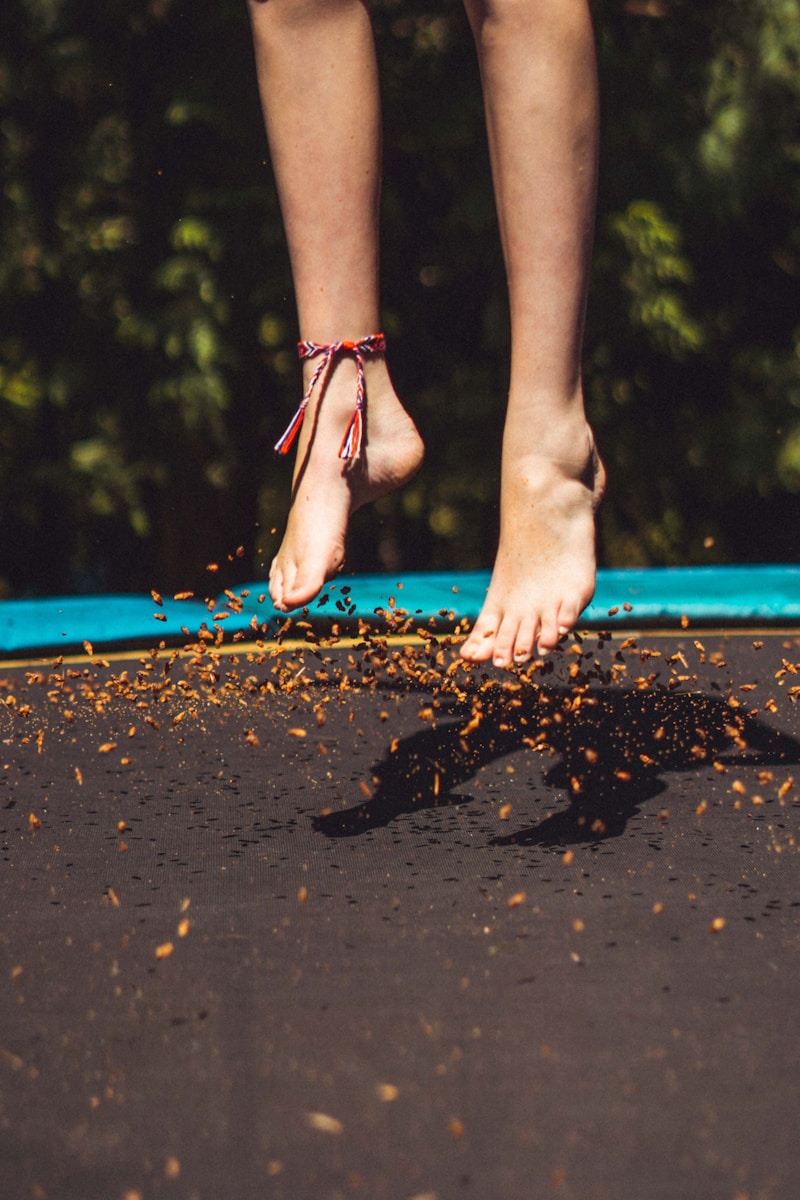
Photo by Jasper Garratt on Unsplash
My daughter is also a tigger and the euphoria you see in her when she has done some hard exercise is remarkable. When the euphoria dissipates, she is calm and happy through the rest of her day. She’s often said she feels fidgety in certain classes at school, or gets distracted. We’ve asked her to notice what her body needs, most likely some movement to look after the Tigger in her. We discussed different strategies such as a walk to the bathroom and doing a few star jumps whilst there.
She’s the child who will most often ask for “tickle time” in the evenings, and usually when there is a lot happening such as studying for exams or orals or tests. Tickle time has been a thing from when our children were very little. It’s very physical, involving tickling and applying deep pressure – like wrestling. It’s quite noisy – shrieks of laugher and shouting, especially when the boy child joins us and they gang up on me! I know when she’s asking for tickle time, she’s asking for some co-regulation. Her body is telling her she needs extra sensory input to counteract the stress she is feeling. Tickle time gives her the deep pressure she craves, and the connection time. And of course, play and laughter does wonders to restore the world the right side up again.

Photo by Mieke Campbell on Unsplash
Tiggers may look like candidates for an ADHD diagnosis at times. But what if, before diagnosis, we were to reflect on what sensory input a person is getting, or not getting. And maybe the “hyperactivity” you’re seeing is simply a frustrated tigger who hasn’t had enough bouncing! If your tigger is having more than an hour of screen time per day, on top of having to sit still in class, they most certainly aren’t getting enough movement time.
Here is a set of exercises you could encourage your tigger to use during the day – such as before sitting down to homework, or during play time. They don’t have to do ALL of them each time, you can choose together depending on how much time you have and how much sensory input is needed. It could be a good connection time to do this with your child, or at the very least to be involved in the process by timing and encouraging them as they go. This is not a punishment! This is a way to help your Tigger feel connected to their own body again, to feel energized and ready to engage with others in healthy ways.

The post Tiggers! appeared first on Linda Smallbones.
]]>The post Introducing the Creative Lorimer O’bree appeared first on Linda Smallbones.
]]>16 February 2024
There’s something incredibly exciting happening on the outside of my play therapy room wall in Howick…
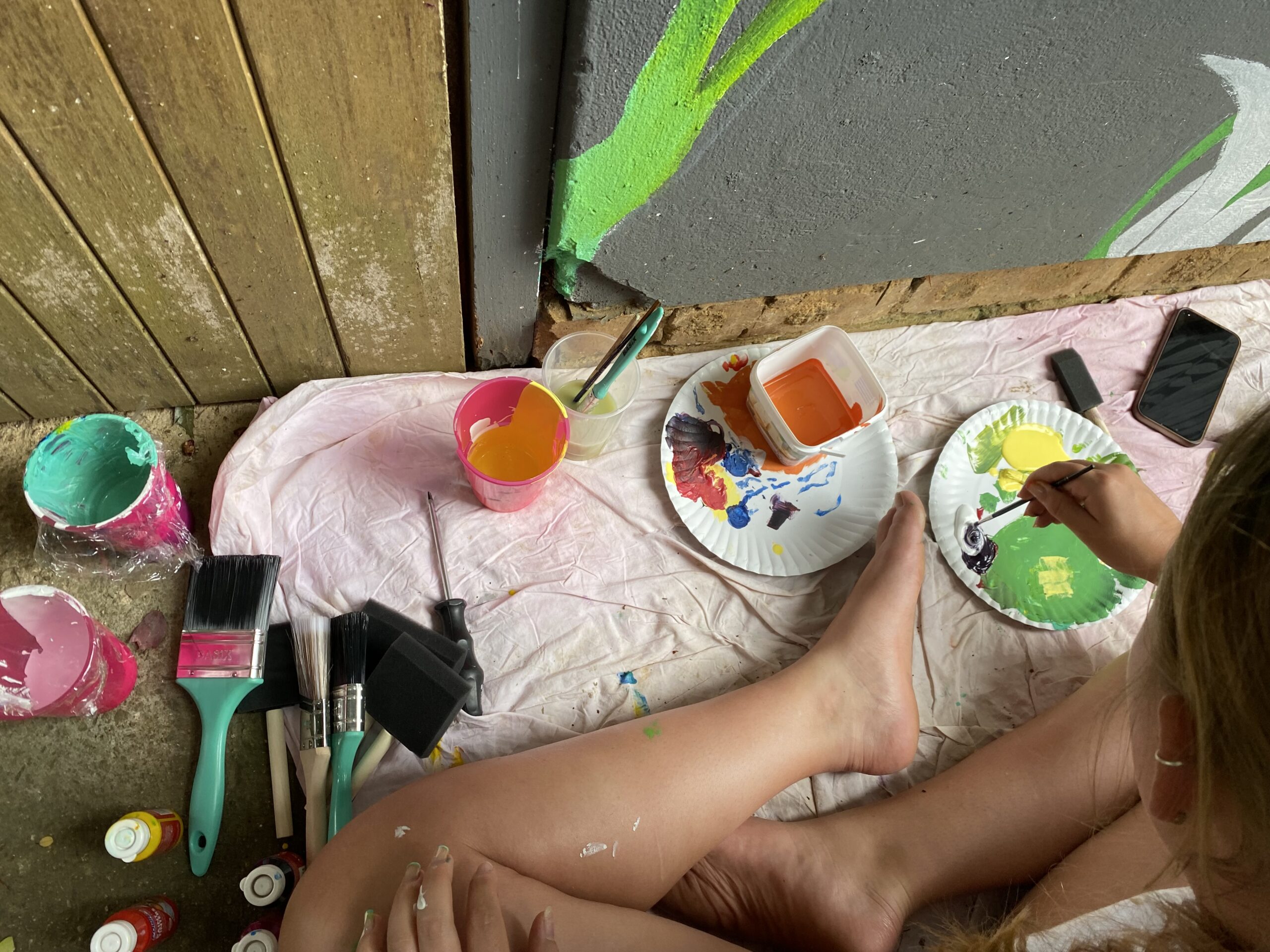
And I am delighted to introduce you to the artist who is making it happen! Lori is a person with a brilliant mix of creativity, administrative skills and sporting prowess. She’s working in sports and marketing at the moment, but ultimately hopes to become a teacher one day.
I asked Lori what her preferred age range to teach would be and she had such a hard time pinning any one age group down! I think that the bottom line is, Lori has a gift for teaching and with her versatile strengths will work with a range of kids her whole life.
How did Lori come to be painting my wall?
Lori is marrying a lovely man called Shaun in early April this year. Shaun and Lori put out an ad on Facebook showcasing their skills and how they are using these to raise funds to pay for their wedding. Her mural work caught my eye, we started a conversation and our mural painting adventure began! (My contribution to this adventure being cups of tea and coffee!!)

The lovely thing about a mural, and particularly what Lori’s doing with my mural, is each piece is a work in itself and so we can continue adding to it for months to come. Endless possibilities! And, I love seeing Lori’s delight in the process too.
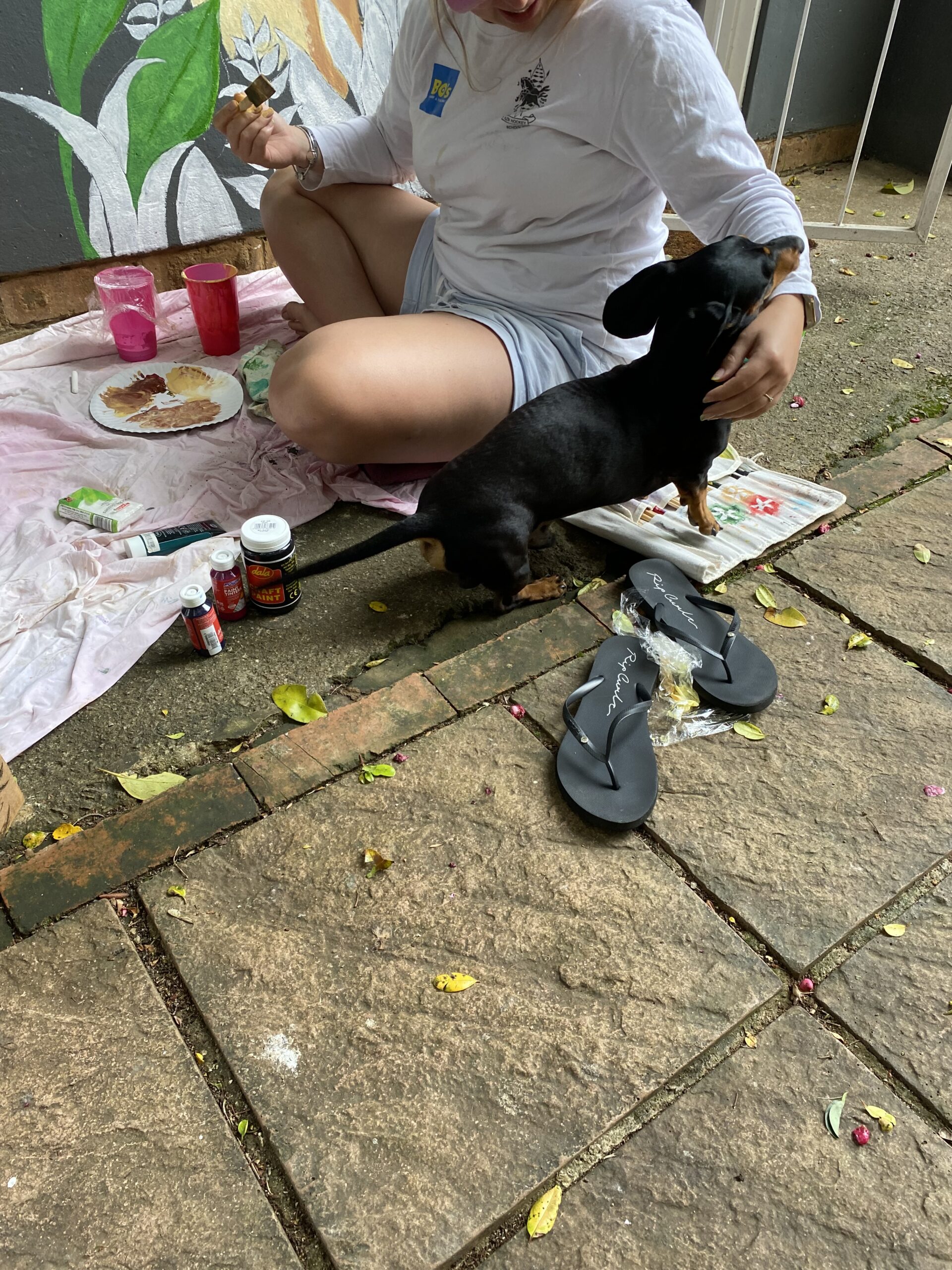
Lori getting a bit of “help” from a local.
Lori’s story of mural painting
Lori shared a little about her journey with painting in general and murals in particular. She took art in school but mostly stuck to drawing on paper with graphite. She painted on canvas when she absolutely had to. Painting felt intimidating to her, putting something on canvas felt so permanent as opposed to drawing where if you messed up, you could scrunch up the paper and start again.
About 3 years ago a friend shared a word from God that she would be doing mural paintings. Lori wasn’t ready to take this on board at the time! However, later on, when she experienced a hunger for creativity, she started painting more and more, practising and honing her skills. When she and Shaun got engaged, they were thinking of ways to earn more money and “murals” just kept coming back to her. And then I got in touch with her and now here she is doing an amazing job! Lori shares that it has been fun and peaceful doing the mural (in spite of some very hot weather and some bleak and rainy weather…)
Spoiler Alert!!
A peak into how it’s looking…
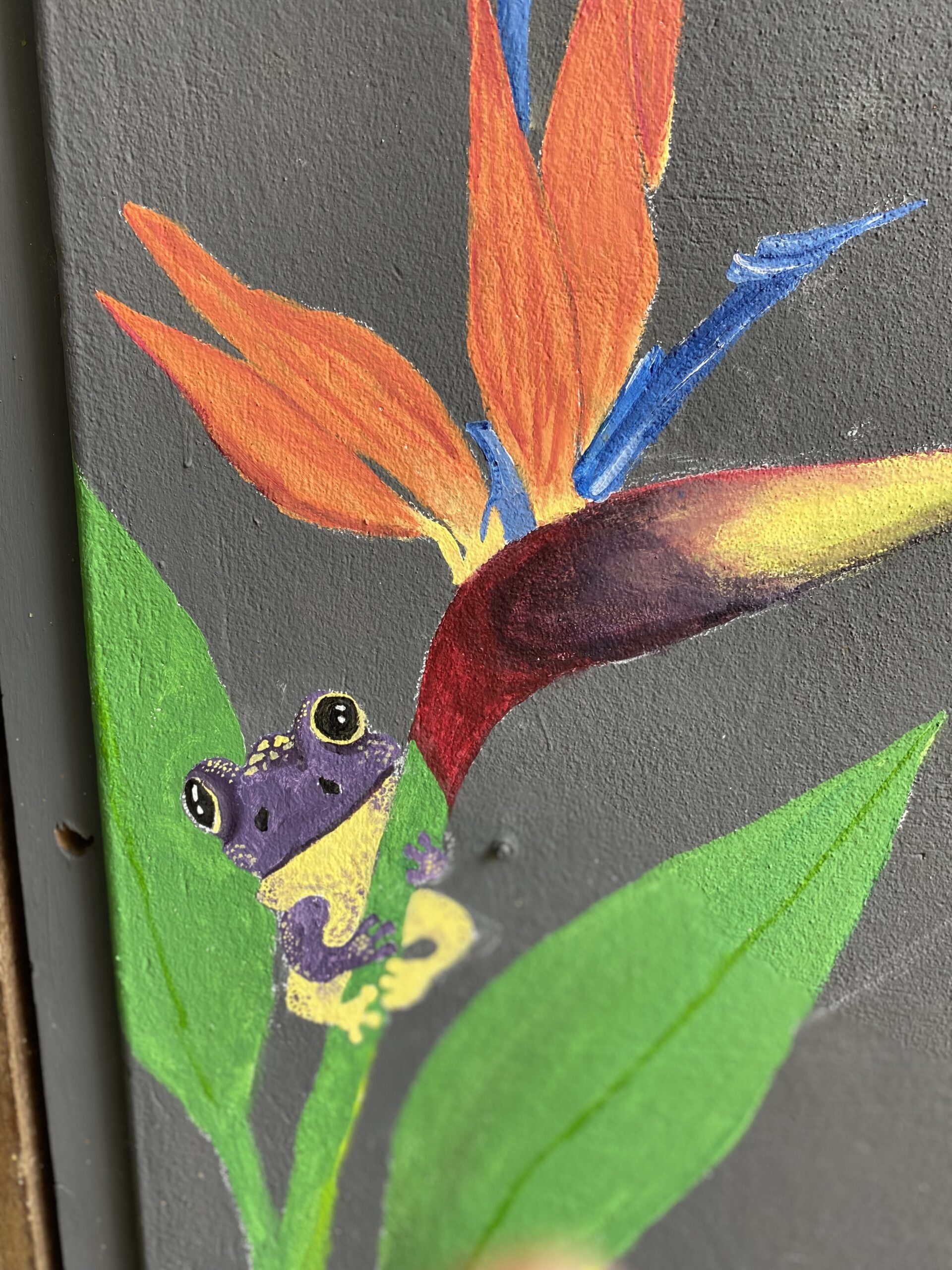
I’m completely in love with this little guy, he’s so cute!

Just about every child I work with tells me a Cheetah is their favourite animal. I love his emerging character. Lori’s attention to detail is amazing!
Lori and Shaun are a really peaceful, creative duo. Lori has listened to what I want, but has also come with ideas and fresh vision, which I truly appreciate. I highly recommend hiring them for a photoshoot, or commission Lori for a unique artwork. Besides their talents, I completely believe in them as a couple and if you hire them, you’re making an investment in an incredible, forever relationship!

A glorious and joyous self-portait!

You can contact Lori on [email protected].
Don’t forget!!
Parent Conversations is open to all parents who want safe, intentional space to chat about parenting. We cover specific topics over the four weeks that most parents struggle with at one time or another. Feel free to contact me if you have questions! Don’t miss out on this opportunity if you’re feeling alone in your parenting struggles!

The post Introducing the Creative Lorimer O’bree appeared first on Linda Smallbones.
]]>The post Talking to children about their bodies: Resources appeared first on Linda Smallbones.
]]>9 February 2024
This is a follow up post to last week’s blog. You can read that post here.
Talking to my child about their body: Where do I start?
Name all body parts
Start normalising conversations about caring for your body, and healthy growing bodies from as young as you can. This helps you get used to talking about it, if you haven’t been before. And it helps your child to know that their body matters. After all, everything happens because we have a body!
Bath time with toddlers is a great time to name all the body parts, including genitals with correct names; vagina and penis. If you have older children, you can read books together that give correct names, and discuss these together. It’s great to have a bit of a giggle about it, talk about how sometimes people feel funny to talk about bodies, but in this house it is OK.
Normalise correct language, nicknames are OK too, but make sure your child knows the correct names for their genitals. This is a protective measure. Say something happens to your child when they are not with you, not necessarily sinister, but for example being hurt in the genitals during rough play, or if they are developing a urinary tract infection and it hurts when they wee. If they can name exactly what is sore to an adult they trust, the adult will have a better idea of how to help. If your child only uses nicknames that only your family knows, the adult might be completely at a loss as to how to help. If a child has been abused in some way, when they disclose with the correct body part names, it is clear to the adult they are disclosing to right from the start.
Talk about Body Rules
There is a fantastic free resource called “Our Bodies” written by Edith Kriel and Marita Rademeyer at Jellybeanz. You can download the booklet for free and use it as a work book with your child. They have relatable illustrations that help you explain to your child the body rules, as based on South Africa’s laws protecting children. “Our Bodies” also covers basic personal hygiene. You can access Our Bodies here.. JellyBeanz is a fantastic organisation doing vital work, consider supporting them if you can!
Keep conversations about bodies focused on protection and healthy growth. For example, choices we make about what we eat to grow healthy, strong bones. Avoid comments on what bodies “should” look like or be able to do. The aim is to foster healthy body image, which increases a child’s confidence and pride in who they are.
Talk PANTS, also known as the underwear rule, is also an excellent body rules/body safety tool. It was developed by the NSPCC in England and they have freely available resources to download, as well as videos to watch. You can find it here.
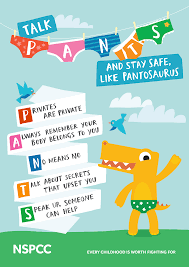
Talk about sex
At some point your child may ask about where babies come from. I think a good time to tell them, whether they ask or not, is before they start formal schooling. This may be my personal reason, but it made sense to me to talk to my son and daughter together when my son was about to start grade 1. I knew he would be introduced to a larger group of children and we wouldn’t know everyone, like we did in pre-school. The chances of another child giving my child information about sex was higher. I wanted to preempt my child hearing something false or potentially traumatizing (!) without having opened up the conversation at home first. Many children simply know too much too soon, in terms of negative exposure to sex (see last week’s post).
Note that in the beginning, my children were 6 and 5 years old. I didn’t mention the word sex – that came much later. But we did read a book together that talked about moms and dads fitting together like puzzle pieces, explaining how dad’s seed meets mom’s egg to produce a baby.
“Our Bodies” has very clear information for children on how this all works. Another resource I highly recommend is “Birds, Bees and Destinies” by Christy Herselman. Her website is The Chat and is well worth a browse.

Go with the flow
Take opportunities as they arise to talk about our bodies, it could be when you’re walking in the bush or on a farm. You might see animals or insects mating. Draw your children’s attention to it and explain it what is happening, talk about what is different and similar between animals and humans.

Photo by David Groves on Unsplash
Keep the conversation going
Talking about our bodies is an ongoing conversation. After I read a book with my kids they said…nothing. We didn’t return to it for quite some time. Take their lead, but also make use of opportunities that crop up. If they talk about kissing or use the word sex for the first time, ask them what it means and listen to their explanation. If they’re flashing in public and they’re over the age of 5 or 6, start talking about socially acceptable places and times to be naked or cover up. It’s important that they know you’re always there to answer their questions, and that your door is open to this conversation.
You’ve got this!!
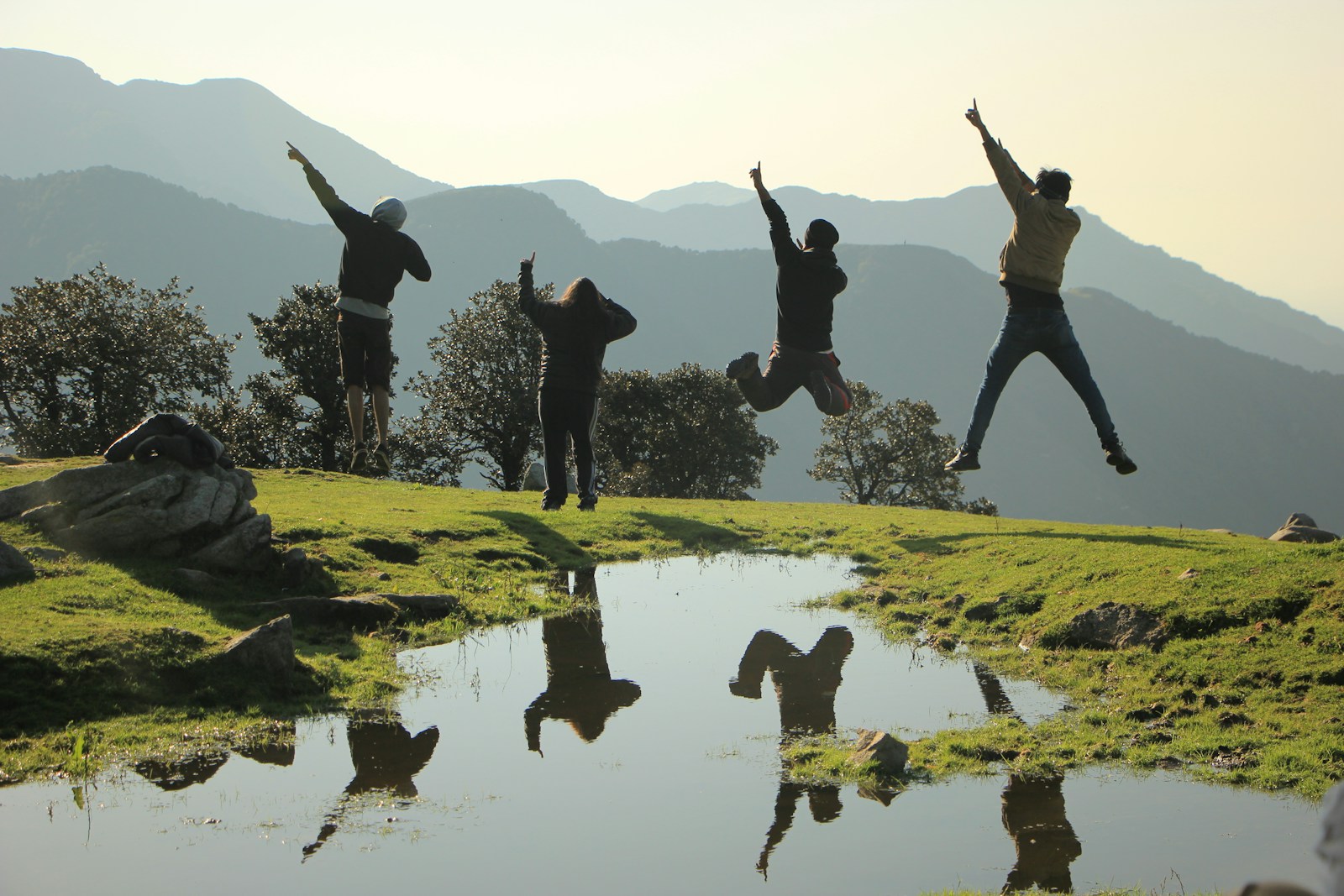
Photo by Manish Sharma on Unsplash
The post Talking to children about their bodies: Resources appeared first on Linda Smallbones.
]]>The post Child on child abuse: An increasing reality and one family’s story appeared first on Linda Smallbones.
]]>2 February 2024
Problematic sexual behaviour in children
I want to draw attention to something that is by no means easy to talk about, let alone think about. I am seeing a marked increase in inappropriate/problematic sexualized behaviour between children. In talking to colleagues also working with children, this is happening everywhere. This is beyond the normal sexual development of “you show me yours, I’ll show you mine”.
Problematic sexualised behaviour is when there is sexualised play between children of the same age, or different ages when one or both children appear to have a lot of sexual knowledge beyond their years and act out sexually with another child, or force the other child to act out sexually with them.
“Premature sexual activity in children always suggests two possible stimulants: experience and exposure. The child exhibiting premature sexual activity may have experienced sexual contact with an adult or older child and may be mimicking the learned behaviour, or the child may have been overstimulated by exposure to explicit sexual activity and may be acting this activity out. Many young children have access to soft-or hard-core pornography on their television sets.” Eliana Gil, 1991.
Obviously, Eliana Gil wrote this quote in her book The Healing Power of Play, before the internet exploded and children had almost unlimited access to screens in many households – across the world.
Please, do not ignore the warning. Sexualised behaviour between children is increasing in an alarming way and parents need to safeguard their children.
How do I safeguard my child?
A good place to start is to ensure you do not give your child their own device when they are too young. What is too young? There is no “rule” or absolute age. But we do know that many people in the tech world limit their children’s screen time. These being the people who create the tech, and market the social media we all engage with daily. https://www.businessinsider.com/tech-execs-screen-time-children-bill-gates-steve-jobs-2019-9 . I highly recommend watching The Social Dilemma on Netflix.
Photo by geralt on PixabayThe actress Kate Winslet has famously not allowed her children to be on social media at all. She said “You don’t get your childhood back”.
https://www-bbc-co-uk.cdn.ampproject.org/c/s/www.bbc.co.uk/news/entertainment-arts-63832696.amp
You can read a previous blog of mine here, on screentime guidelines for children of all ages, set by the World Health Organization.
Of course, exposure through TV or social media and/or access to pornography whether by purposeful searching or by accident, is only one way children might become inappropriately sexualised. Tragically, sexual abuse of children (girls AND boys) is extremely high in South Africa. The Optimus Study (2016) found that 35.4% of children had experienced some form of sexual abuse in their lifetime.
The experience of sexual abuse can trigger problematic sexual behaviour, especially when a child is unable to get the help they need.
Normal sexual development and behaviour
It’s hard to think of children as sexual beings, but this is very different to them being sexualised. Children’s sexual development is a normal part of their biological development. It is incremental growth that happens over time, usually as they enter puberty and adolescence, they become more interested in relationships and knowing about sex. Hormones flick a switch on internally that starts making growing adolescents ready for consensual sexual relationships later on when they are cognitively, socially, emotionally and physically ready.
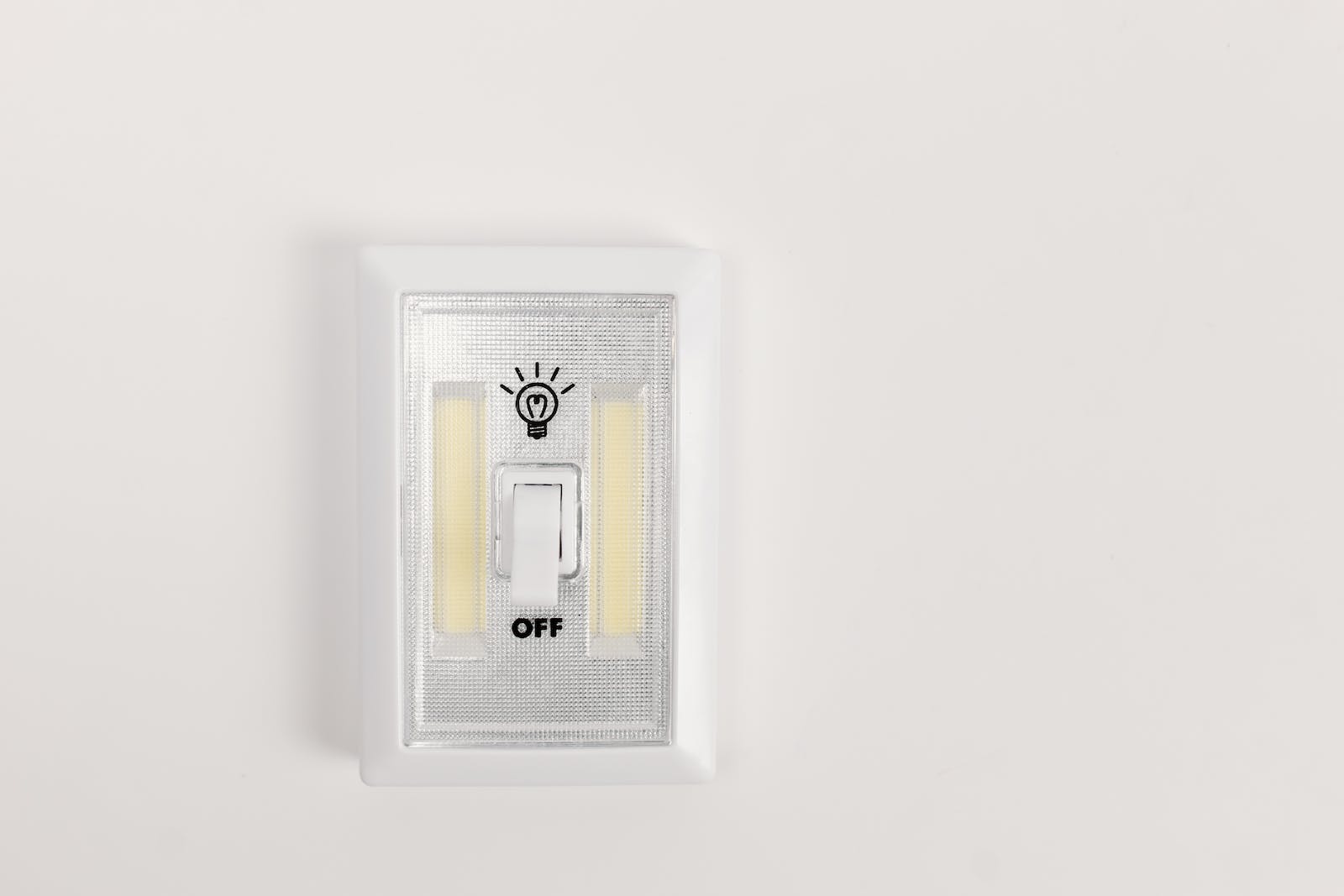
Photo by Tara Winstead on Pexels
Problematic or inappropriate sexualised behaviour happens when that “switch” is flicked on way before time, either through exposure or experience. The child is then bombarded with sexual information that they are in no way ready to process or understand. There is so much shame around talking about our bodies, sex and abuse that children very often don’t talk to anyone about what has happened, or what they might have been exposed to.
Normal “sexual” play in young children is playful, curious and innocent. It is children being curious about their bodies and that of others; how they are different and how they are the same. In normal sexual development, children simply have questions they want answered, there is no coercion, their behaviour is not sexually motivated in any way. They may be inappropriate – such as trying to look down another child’s underwear! But they’re doing this out of innocence and it is the work of the adults in children’s lives to teach them what is socially acceptable and not. AND, to talk to them about their bodies.
Many parents express reluctance/fear in talking to their children about their bodies, giving genitals their correct names, and talking about where babies come from. There are many good reasons for this fear and/or reluctance. However, we need to have these conversations with our children.
One family’s story: Child on child abuse on a play date
I have been journeying with one family whose child was 4 years old when they were a victim of serious sexualised behaviour perpetrated by another child several years older. (Details are changed to protect anonymity).
Mom did all the body safety work with her children, from the time they were toddlers. This was an ongoing conversation happening as the children grew, and conversations happened organically as the family went about their days. However, one child was subject to inappropriate sexualised behaviour by an older child (more than 3 years older) during a play date at which mom was present. This child did tell mom some time after the sexualised behaviour had started, and I believe the child was able to tell because mom had opened up the conversation in the first place.
Stop the bus. Why, if a parent does the safeguarding work, does this child not “just say no” and run away? Here is a crucial fact. Where one child has power of some kind over another, it is often almost impossible to say no to that child. (You can also substitute “adult” for child into that sentence). Sometimes we expect way too much of children to stand up to others who have more power than them whether it be a stronger body, louder voice or simply more authority and charisma. What’s more, if parents are affirming the relationship, then everything must be ok. To consider that it is not ok in that moment is too threatening, and so going along with it is easier.
The mom discussed with me how before play dates (which is where the inappropriate sexualised behaviour occurred), she would remind her children to be kind and play nicely. And what do children understand by “playing nicely”, well, they make the assumption that they need to be cooperative, and that they assume they can trust the other kids on the play date to have their best interests at heart. Because it’s a play date and they’re friends, right?!
Processing play dates
She wishes instead that she had given a clear message that it is not the children’s responsibility to keep other children happy. We discussed some different ways of talking to our kids about their social encounters with others. I’ve shared this in a previous blog, that I used to ask my children “did you feel safe?” after play dates. The follow up question was, “what made you feel safe?” or, “What made you feel unsafe?” This mom shared with me her go to question after play dates is “What were the highlights and lowlights on that play date for you?”
These questions give your children permission to reflect on their social encounters and experiences and start to think about what they feel comfortable or uncomfortable with.
Don’t sacrifice safety for people-pleasing
The fact is: Our children do not have to be kind and polite at all costs if someone is making them feel uncomfortable about their boundaries and body boundaries in some way. You can help give your children an “out” by telling them if they ever feel uncomfortable in a situation, they can use mom as the excuse. “My mom says I can’t do that.” Or “Let me just go check that with my mom, I don’t think she wants me to do that.”
This mom’s message to others now is: Don’t trust people blindly. Abuse happens in the most innocent spaces, we don’t know what other children have been exposed to that may in some way impact our own children.
Red flags of inappropriate sexualised behaviour
I asked this mom what she would now consider to be red flags of problematic or inappropriate sexualised behaviour. She shared to look out for children trying to continually isolate specific children from others, and engaging in secretive behaviour. Then, she noticed her child was having outbursts for no apparent reason and using some manipulative behaviour. The child also experienced constipation for some time. It only became clear in retrospect where these behaviours came from, but if you have any niggles at all, investigate further.

A red flag is a warning. Like the red man on a traffic light, it tells you something is not safe. Stop and investigate.
By investigate further, I mean first and foremost make more time to connect with your child. Move closer (without smothering) and be present and available. Make time to be alone with them, show them you are there. Give opportunities for them to share in case there is something they need to disclose. Discuss any “red flag” behaviour with a psychologist or social worker just so that you get a professional perspective. A child-friendly investigation using play therapy techniques may be needed to ascertain if there has been any exposure to any inappropriate sexual behaviour. Also, check on parental controls on all devices and ensure there is no access to inappropriate content.
Help & Healing
I asked the mom how she went about healing for herself from this traumatic situation. She said having someone to talk to, and an objective, professional outside opinion has been crucial for her.
Please don’t keep silent if you are concerned about your child’s behaviour, especially if it has become sexualised. Shame and embarrassment keep us silent too often and then our children don’t get the help they need. You may be in a position where someone has reported that your child’s behaviour has been sexually inappropriate. Do not punish your child and do not ignore the behaviour. Seek help.
Next week I will share several resources on how to address topics of sexuality education and body boundaries with your child.
In the meantime, check on your child’s online usage and ensure you are supervising their screentime. These are things you can control.
The post Child on child abuse: An increasing reality and one family’s story appeared first on Linda Smallbones.
]]>